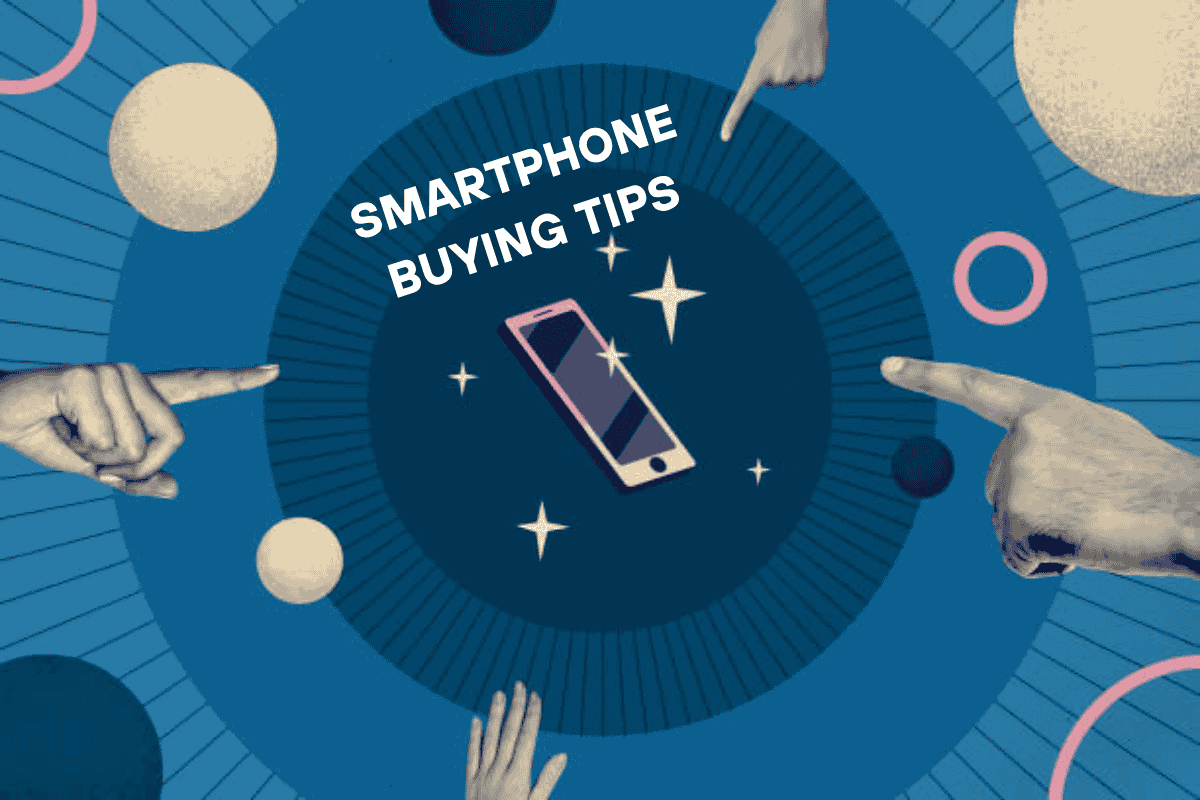
Hello people! What are the NYT’s top smartphone buying tips and insights? The smartphone industry offers numerous choices, accompanied by a plethora of confusing technical terms and enticing ads. The new features and improvements in each year’s phones can make the selection of a handset more confusing. Due to rigorous testing and an emphasis on consumer needs, The New York Times, through Wirecutter, can provide readers with expert advice on selecting the best products.
It boils down to the NYT’s method of choosing a smartphone, focusing on what is useful, will last, and is most important to the average person, instead of getting lost in marketing slogans.There are many options which make it tough to decide which to buy. When you start looking for a phone, you can choose between those for less and those made for more money.
Let’s dive in!
Table of Contents
The NYT's Outlook: Serve the Goals

Determine Your Budget First
According to The New York Times and Wirecutter, when buying a smartphone, consider practicality, durability, and value first. They are aware that for the majority of consumers, the most outstanding value does not come just from buying the newest or most advanced phone. What makes them great is when a device takes care of essential jobs, blends into our routine, and doesn’t cost much over its useful life.This is how behind-the-scenes work arguably plays the most significant role in what they recommend:
- The camera, battery, and software are the main features that people always focus on.
- The NYT and Wirecutter conduct detailed tests that compare devices in the situations and environments in which people would use them.
- Top Advice for Selecting a Phone Provided by The New York Times
- With many years of reviews and buying guides, these are the main points the New York Times and Wirecutter suggest when buying a smartphone:
What Will You Use Your Data For?
Are you a professional who needs professional equipment, or will standard cameras do when you’re sharing on social networks?
Are you more likely to play modern video games or simply use your device to watch videos and social media? You don’t need a high-end processor for simple daily tasks.
How many times a day do you charge your phone because you’re using it, versus when you’re not? Some phones prioritise thinness over battery size.
Do you often need to quickly write down notes or work on designs with your computer?
Should you opt for a smaller phone that you can take anywhere or a larger one that’s perfect for watching or working?
Be Sure to Set a Budget
A smartphone can cost anywhere from under $200 to over $2,000. Knowing how much you usually spend makes your decision much easier. Using many examples, the NYT points out that you don’t have to pay massive prices for a great device.
Make the Camera Your First Priority
Some people are increasingly choosing to use their smartphones as cameras instead of separate devices. Highlighting the quality of the camera has become a habit for The New York Times when comparing devices.
Computational Photography Is the Key
More pixels alone won’t improve photos. Today’s smartphones use software and AI (computational photography) to capture fantastic images, particularly when it’s dark outside. Google Pixel phones are known for their strong performance in software updates.
Zoom Makes a Difference
A wide or ultra-wide lens is expected, so look for a periscope telephoto on a phone if you usually want to capture distant objects without losing quality.
Good Video
If working with video is important to you, choose models that offer 4K and 60 fps high frame rates, OIS, and additional video modes.
A good camera produces similar colour and detail using its main, wide-angle, or telephoto lenses.
Battery Life: It's Not Only About mAh
Lorem ipsum dolor sit amet, consectetur adipi
Although your battery capacity matters, real-world battery life is influenced by your phone’s processor, the type of screen you have, and optimised software.
Don’t trust only the advertised power when shopping for batteries. Reviews involving regular tests of battery usage, such as the amount of video playback, browsing, and gaming, should provide an accurate idea.
Wireless Charging Advantage
You don’t have to worry about the battery if you use your phone often at night.
When the screen has adaptive refresh rates, the battery is used more efficiently by only cranking up the refresh rate when needed.
scing elit. Ut elit tellus, luctus nec ullamcorper mattis, pulvinar dapibus leo.
Getting the Most from Software

The NYT points out that the difference between Android and iOS is essential, but what stands out is how smoothly the software works on each device.
Some Android manufacturers personalise Android by adding numerous apps and UI elements that can slow down the phone and consume storage space. Going for Stock Android or My UX is often suggested, as they make things on your phone easier and more fluid.
You should cover this aspect for a long and secure system. Android phone users with Google Pixel devices enjoy the longest software updates they can get, after which Samsung devices are next in line. Before making a purchase, be sure to research how dedicated other manufacturers are.
The UI should be designed so that it feels easy to use and navigate, like moving around your home. How you set up gestures, quick settings, and your app drawer can significantly impact the usability of your device daily. See how smoothly the phone links with your watch, tablet, smart home devices, PC, and cloud services.
Choosing Specs That Truly Matter
Don’t spend too much time focusing on hardware numbers. Although the details in a product’s manual appear promising, the actual results in everyday use may not be impressive. If you aren’t a serious gamer or video editor, you should be able to do all your regular tasks with any new midrange CPU or GPU on the market. Quickly, the benefits from increasing investment become much less significant at the top.
For most purposes, you should have at least 6GB up to 8GB of RAM. An increase in RAM improves multitasking, but too much RAM may not be recognised by the average user.
The base storage of 128GB works well for most people. For people who take many pictures or videos or have huge apps, it’s best to select a phone with at least 256 GBB. A cloud storage account reduces the need to buy vast storage on your phone.
Durability and Repairability Matter in Smartphones
Although glass is often more noticeable on modern phones, it also makes them more fragile. For the best results, opt for phones with Gorilla Glass (or a comparable standard) on both the front and back. If your phone has an IP rating, you can use it without fear of spills or splashes harming it.
The NYT advises always using a case and screen protector to ensure your phone is well-protected, even if it is made to last.
You may find helpful information on repairability by checking the data from some websites or organisations. Having phones that are less expensive to repair allows them to last much longer.
5G Phones Ensure Better Network
Ensure your network and 5G phone are compatible by checking with your carrier.
Have you ever learned about the differences between Sub-6 GHz and mmWave 5G? The majority of networks use frequencies below 6 GHz, although mmWave ones are both quicker and reach farther.
The majority of flagship phones are compatible with both.
Unlocking a handset allows users to use any network or travel abroad easily. If you get a carrier-locked phone, you might receive a discounted price, but you’ll be limited to one carrier.
Think Twice Before Yearly Upgrades
The NYT usually concludes that you should avoid updating your smartphone each year.
Most updates introduce minor changes that don’t significantly alter the user experience.
Using a phone for several years allows you to spend less year by year on a device.
Sometimes, choosing last year’s Pro model (for example) is much better for what you get than the most advanced base model of the current year.
Rely on Wirecutter for Reviews
Lorem ipsum dolor sit amet, consectetur ad
Be careful not to trust only what a company says about their product or the opinions of those who have it.
Wirecutter tests using real-life scenarios, constantly comparing new products to their competitors. They also evaluate how the product stands over time and what users think.
Look for reviews that discuss the phone’s benefits and drawbacks and compare it to rival devices.
Skip the excitement:
See what experts say about a phone after it has been launched before deciding. People’s first thoughts about someone can be incorrect.
ipiscing elit. Ut elit tellus, luctus nec ullamcorper mattis, pulvinar dapibus leo.
NYT Mobile Insights

Along with the tips, the New York Times’ tech writers present a bigger picture of the recent smartphone changes.
Is the AI Transformation for Real, or Should We View It as You Would a Gimmick?
Artificial Intelligence on smartphones is often mentioned in The New York Times’ news coverage. First used as a buzzword, on-device AI is now a functional reality.
Usefulness
Although these AI tools look powerful, the NYT often asks if they provide breakthrough value to the average person or seem like enjoyable additions to the platform. The best test is if AI makes our everyday tasks better without us even noticing.
Because more AI services are using “the cloud,” people are raising concerns about how their personal information will be managed. Using AI on your phone means your data stays in the device.
Conclusion
Ultimately, The New York Times gives simple and researched tips to people looking to buy a smartphone. They advise paying attention to your needs, such as the camera quality, battery life, updated software, or security features. Instead of aiming for the highest price, The New York Times advises buyers to look for value, usefulness for years to come, and a phone that works well in the brand’s overall ecosystem.
The NYT’s direction helps people avoid advertising, skip unwanted marketing schemes, and choose a phone that best suits their needs. Whether you are interested in tech or not, these facts provide the knowledge to buy wisely today and for years beyond 2025. How does the NYT help you choose the right smartphone?
FAQS
1: What advice does the NYT offer when purchasing a smartphone?
Given what you need, make your choice, not because the gadget is trendy or expensive.
2: Of all mobile devices, is the iPhone or an Android device the better choice for the NYT?
Either option works well, but choose one depending on the environment and your needs.
3: Are iPhone operating system updates a key issue for the NYT?
Long-term updates are necessary for both improved performance and enhanced security.
4: As the NYT advises, should people update their phones as often as the new models come out?
No—use your phone for a long time unless it starts acting up.
5: What does the NYT do for people purchasing budget phones?
Choose mid-range phones that will continue to receive updates for an extended period.
Lorem ipsum dolor sit amet, consectetur adipiscing elit. Ut elit tellus, luctus nec ullamcorper mattis, pulvinar dapibus leo.




Leave a Reply